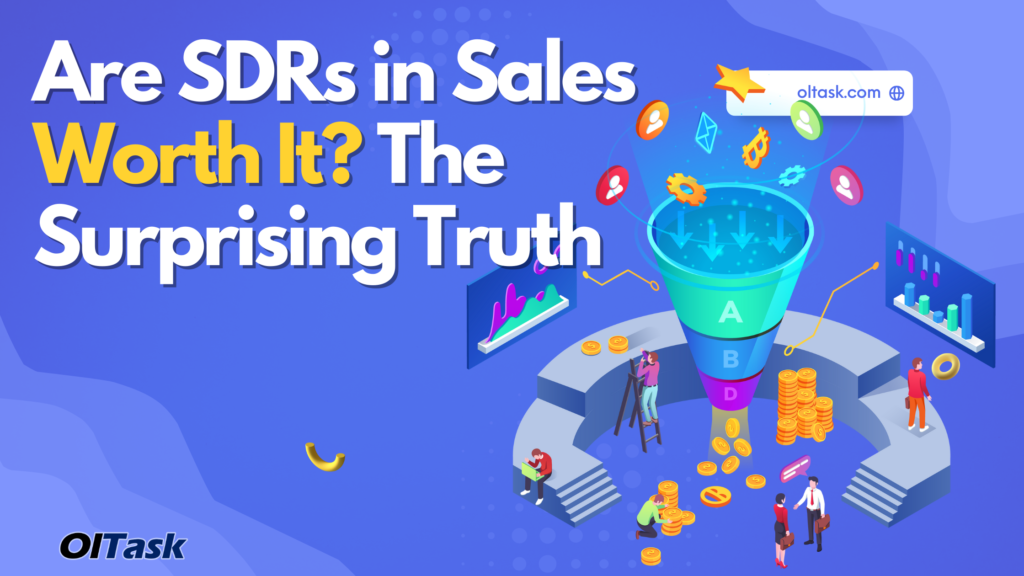In today's competitive business landscape, SDR sales have become a crucial element in building strong sales pipelines. Sales Development Representatives (SDRs) are the driving force behind successful lead generation and qualification processes. As companies strive to grow their revenue, understanding the role of SDRs has never been more important.
Whether you're a business owner, a sales professional, or someone considering a career in sales development, this article will provide you with in-depth insights into the world of SDR sales. We'll explore the responsibilities, strategies, and tools that contribute to the success of SDRs in modern organizations.
This comprehensive guide will cover everything from the definition of SDR sales to best practices and tips for excelling in this dynamic role. By the end of this article, you'll have a clear understanding of what it takes to thrive as a Sales Development Representative.
Read also:Unveiling Moviruzcom 2025 The Future Of Digital Entertainment And Streaming
Table of Contents:
- What is SDR Sales?
- Role and Responsibilities of an SDR
- Importance of SDR Sales
- Skills Needed for SDR Success
- Effective SDR Sales Strategies
- Tools and Technology for SDRs
- Metrics and Measurement for SDR Performance
- Common Challenges Faced by SDRs
- Career Growth Opportunities for SDRs
- Future Trends in SDR Sales
What is SDR Sales?
Sales Development Representative (SDR) sales refer to the process of identifying, contacting, and qualifying potential leads for further sales engagement. SDRs play a critical role in the early stages of the sales funnel by reaching out to prospects, understanding their needs, and determining whether they are a good fit for the company's products or services.
Key Functions of SDR Sales
Here are some of the primary functions of SDR sales:
- Prospecting and generating new leads
- Qualifying leads based on company criteria
- Building relationships with potential customers
- Handing off qualified leads to account executives
Role and Responsibilities of an SDR
An SDR's role is multifaceted and requires a combination of skills and strategies to succeed. Below are the key responsibilities of an SDR:
Lead Generation
One of the primary responsibilities of an SDR is to generate leads through various channels such as email, phone calls, and social media. This involves researching potential customers, crafting personalized messages, and nurturing leads until they are ready to move forward.
Qualification Process
SDRs must effectively qualify leads by assessing their needs, budget, and decision-making authority. This ensures that only the most promising prospects are passed on to the account executives for further sales efforts.
Read also:Best Practices To Securely Connect Remote Iot P2p Ssh On Raspberry Pi
Importance of SDR Sales
SDR sales are vital for the success of any organization looking to scale its revenue. By focusing on lead generation and qualification, SDRs help streamline the sales process, allowing account executives to focus on closing deals with qualified leads.
According to a study by Salesforce, companies with dedicated SDR teams experience a 20% increase in sales productivity. This highlights the significant impact SDRs have on driving revenue growth.
Skills Needed for SDR Success
To excel as an SDR, certain skills are essential. Below are some of the key skills that contribute to SDR success:
Communication Skills
Effective communication is at the core of SDR sales. SDRs must be able to articulate value propositions clearly and persuasively while actively listening to prospects' needs and concerns.
Time Management
SDRs often juggle multiple tasks simultaneously, making time management a crucial skill. Prioritizing leads and managing outreach efforts efficiently can significantly impact productivity and success.
Effective SDR Sales Strategies
Implementing the right strategies can make a world of difference in the effectiveness of SDR sales. Here are some proven strategies for SDR success:
Personalized Outreach
Customizing outreach efforts to match the specific needs and interests of each prospect can lead to higher engagement rates. Personalized emails and phone scripts can help build trust and establish rapport with potential customers.
Multi-Channel Approach
Utilizing multiple channels such as email, phone, and social media can increase the chances of reaching prospects effectively. A multi-channel approach ensures that SDRs maximize their outreach efforts and improve response rates.
Tools and Technology for SDRs
Modern SDRs rely on various tools and technologies to enhance their productivity and effectiveness. Some of the most popular tools include:
C Customer Relationship Management (CRM) Systems
CRM platforms like Salesforce and HubSpot help SDRs manage leads, track interactions, and collaborate with other team members. These tools provide valuable insights into prospect behavior and enable data-driven decision-making.
Outreach Automation Tools
Automation tools such as Outreach and Salesloft simplify the outreach process by automating repetitive tasks like email scheduling and follow-ups. This allows SDRs to focus on high-value activities and improve overall efficiency.
Metrics and Measurement for SDR Performance
Measuring SDR performance is essential for identifying areas of improvement and ensuring accountability. Key metrics to track include:
- Number of leads generated
- Conversion rates from lead to opportunity
- Average response time
- Number of meetings booked
Common Challenges Faced by SDRs
Despite their importance, SDRs often face several challenges in their roles. Some of the most common challenges include:
Low Response Rates
Many SDRs struggle with low response rates from prospects, which can be frustrating and demotivating. Developing compelling messages and persistently following up can help overcome this challenge.
Time Management
Juggling multiple tasks and managing a large number of leads can be overwhelming for SDRs. Prioritizing tasks and using productivity tools can help mitigate this issue.
Career Growth Opportunities for SDRs
SDR roles serve as an excellent stepping stone for those looking to advance their careers in sales. Many SDRs go on to become account executives, sales managers, or even sales leaders. The skills and experience gained as an SDR are highly valuable in the sales industry.
Future Trends in SDR Sales
The future of SDR sales looks promising, with emerging trends such as artificial intelligence, predictive analytics, and social selling set to transform the industry. Embracing these trends can help SDRs stay ahead of the curve and continue delivering value to their organizations.
Artificial Intelligence
AI-powered tools can assist SDRs in lead prioritization, predictive analytics, and automation, enabling them to work smarter and more efficiently.
Social Selling
Social media platforms like LinkedIn offer SDRs new opportunities to engage with prospects and build relationships. Leveraging social selling strategies can significantly enhance SDR effectiveness.
Conclusion
In conclusion, SDR sales play a crucial role in driving revenue growth for organizations. By understanding the responsibilities, strategies, and tools associated with SDR roles, businesses can maximize their sales potential and achieve success. We encourage you to implement the insights shared in this article and take action to improve your SDR processes.
Feel free to leave your comments, questions, or feedback below. If you found this article helpful, please share it with others who might benefit from it. Don't forget to explore our other resources on sales and marketing strategies!


